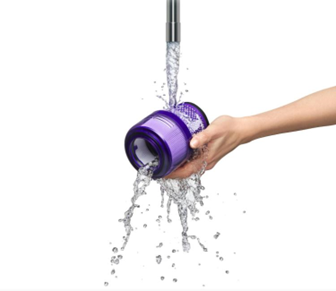Dyson vacuums are known for their powerful suction and innovative design, making them a popular choice for many households. However, to keep your Dyson vacuum performing at its best, regular cleaning and maintenance are essential. This comprehensive, step-by-step guide will help you understand the importance of maintaining your Dyson vacuum and provide detailed instructions on how to clean Dyson vacuum properly. With our guide, you can ensure that your Dyson vacuum continues to offer optimal performance and longevity.

Regular maintenance of your Dyson vacuum is crucial for several reasons, all of which contribute to the overall efficiency and lifespan of the device.
Dust and debris can accumulate over time, causing blockages in your Dyson vacuum’s filters, hoses, and brush heads. Without regular maintenance, these clogs can reduce suction and overall performance. By routinely cleaning and checking these components, you keep the airflow unobstructed. This ensures your Dyson continues to deliver strong suction power and cleans your home efficiently and thoroughly.
Just like any other appliance, the internal components of a Dyson vacuum can wear out over time. Regular cleaning can help extend the life of these parts. Dust and dirt can cause friction and damage the motor and other internal parts, but with proper maintenance, you can minimize this wear and tear.
A well-maintained vacuum cleaner performs better, providing you with cleaner floors and healthier air. When the filters, brush bar, and hose are clean, the vacuum can operate at peak efficiency. This means you won’t need to go over the same spot multiple times, saving you time and ensuring a more thorough clean.
Here’s a detailed step-by-step guide to help you clean your Dyson vacuum, ensuring it operates like new.
Before you start cleaning your Dyson vacuum, always ensure it’s unplugged from the power source. This is essential for your safety and helps prevent any risk of electrical shock or damage to the vacuum. Place the vacuum on a flat, stable surface in a clean, well-lit area to make the entire cleaning process more efficient and hassle-free.
The dust bin in a Dyson vacuum collects all the dirt and debris. To empty it, press the release button usually located near the handle. Open the bin and dispose of the contents into a trash bag. For a thorough clean, rinse the dust bin with water and let it dry completely before reattaching it to the vacuum.
Dyson vacuums typically have one or more filters that need regular cleaning. Locate the filters, which are usually close to the dust bin or in compartments on the vacuum body. Remove them and rinse thoroughly under cold water without using any detergent. Squeeze out excess water and let the filters dry for at least 24 hours before reinstalling them.
The brush bar is instrumental in agitating and lifting debris from your floors. To clean it, first, remove any hair or strings wrapped around the bar. You might need a pair of scissors to cut through stubborn tangles. If the brush bar is removable, take it out and wash it with water. Ensure it is completely dry before placing it back into the vacuum.
A clogged hose can significantly reduce your vacuum’s performance. Disconnect the hose from both ends and inspect it closely for any blockages. Use a long, flexible brush or a broom handle to dislodge any debris lodged inside. Once cleared, rinse the hose with water and let it dry thoroughly before reattaching it to the vacuum.
Finally, use a damp cloth to wipe down the exterior of the vacuum. Pay close attention to the wheel area and attachments, as these often collect dust. Once everything is clean and dry, reassemble the vacuum by placing all the components back in their respective places. Plug the vacuum back in and test it to ensure everything is working correctly.

Routine maintenance is key to keeping your Dyson vacuum in prime condition. Understanding when to clean each part can make a significant difference.
For light to moderate usage, clean the dust bin and filters once a month. The brush bar and hose should be inspected and cleaned every three months. For households with pets or heavy usage, you might need to clean these components more frequently – dust bin and filters every two weeks and the brush bar and hose once a month.
If you notice a decrease in suction power, unusual noises, or an unpleasant odor, it’s a clear sign your Dyson vacuum needs cleaning. Other red flags include the brush bar not rotating, poor pickup on carpets or hard floors, or the vacuum randomly turning off. These symptoms often point to clogs, dirty filters, or debris buildup inside the unit.
Regularly cleaning your Dyson vacuum not only maintains its efficiency but also extends its lifespan. If you’re wondering how to clean Dyson vacuum properly, this step-by-step guide will help you prevent common issues such as clogs and component wear, ensuring your vacuum remains in top working condition. Routine maintenance allows you to enjoy a cleaner home with less effort and greater satisfaction.
It’s recommended to clean the filters at least once a month for optimal performance. If you use your vacuum extensively or have pets, consider cleaning the filters every two weeks.
Yes, you can wash the brush bar with water. However, make sure it is completely dry before reattaching it to the vacuum to prevent any damage.
If your Dyson vacuum loses suction after cleaning, check for any remaining blockages in the hose or filters. Ensure that all components are dry and securely in place. If the issue persists, consult the Dyson support team for further assistance.